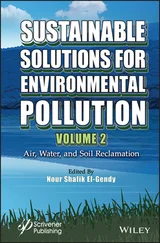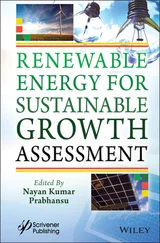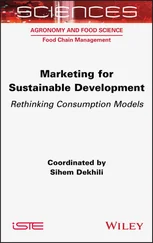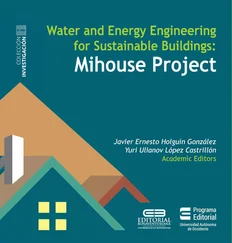Researchers utilized corn, which is a low cost agro waste for reduction of toxic Cd, for the contaminated site and corn biomass utilization. The Cd phytoextraction was enhanced by adding RL and SP., where 4 mmol/kg was set as the optimum dose for both RL and SP. To execute the phytoextraction experiment on corn, the optimum dose of biosurfactants had been applied at different growth stages of corn, i.e. the 7th, 45th, and 80th day from the sowing. On the 45th day of the experiment, the highest Cd uptake levels were recorded and RL showed a maximum Cd uptake capacity of 39.06 mg/kg. The recorded data was also validated by bioaccumulation factors, which reflected that RL increased soil Cd uptake by corn plants to the highest extent. Also, Cd leaching after biosurfactant addition was studied and results confirmed a lower level of leaching compared to EDTA applications.
The performance of an anionic biosurfactant from Candida sphaerica for the removal of heavy metal ions collected from soil of an automotive battery industry have been evaluated by Luna et al. [66]. They also evaluated metal remediation performance of biosurfactant from an aqueous solution. Multiple combinations of biosurfactant solution, sodium hydroxide, and hydrogen chloride were tested. Biosurfactant showed a very efficient removal rate with values of 95, 90, and 79% for Fe, Zn, and Pb, respectively. Treatment of biosurfactant solution with 0.1 and 0.25% HCl solution increased the metal removal rate. The recycled biosurfactant also showed 70, 62, and 45% of Fe, Zn, and Pb removal efficiency, respectively. In another study, Rufino et al. [32] extracted lipopeptide biosurfactant from C. lipolytica (UCP 0988). Both Zn and Cu metal ions were reduced by up to 96% of their initial concentration, and also there was significant reduction in the concentrations of Pb, Cd, and Fe.
Scientific communities for the production of biosurfactants have also utilized many species of Bacillus . In one study, surfactin extracted from B. subtilis have been tested for the removal of heavy metals from a contaminated soil (890 mg/kg Zn, 420 mg/kg Cu, 12.6% oil and grease) and sediments (110 mg/kg Cu and 3300 mg/kg Zn). Results showed that 25 and 70% of the Cu, 6 and 25% of the Zn, and 5 and 15% of the Cd could be removed by 0.1% surfactin with 1% NaOH, respectively, after one and five batch washings of the soil. Also, 15% of the Cu and 6% of the Zn could be removed after a single washing with 0.25% surfactin/1% NaOH from the sediment [67]. In their subsequent study, a batch study was performed by Mulligan et al. [17] to evaluate the feasibility of biosurfactants extracted from different strains for the removal of metal ions from sediments. Surfactin, rhamnolipids, and sophorolipid extracted from B. subtilis , P. aeruginosa and T. bombicola , respectively, were evaluated using sediment polluted with metals (110 mg/kg Cu and 3300 mg/kg Zn); 65% of the Cu and 18% of the Zn were removed by studied biosurfactant after a single washing with a concentration of 0.5% rhamnolipid, whereas 25% of the Cu and 60% of the Zn were removed by 4% sophorolipids. Compared to rhamnolipid and sophorolipids, surfactin was less effective, removing 15% of the Cu and only 6% of the Zn. Singh and Cameotra [68] utilized B. subtilis A21 species to synthesize lipopeptide biosurfactant, consisting of surfactin and fengycin, for the removal of petroleum hydrocarbons and heavy metals from contaminated soil. Soil washing with lipopeptide biosurfactant solution removed significant amounts of petroleum hydrocarbons (64.5%) and metals, namely Cd (44.2%), Co (35.4%), Pb (40.3%), Ni (32.2%), Cu (26.2%), and Zn (32.07%).
To evaluate the efficiency of environmentally compatible rhamnolipid biosurfactant produced by P. aeruginosa BS2 for the remediation of Cd and Pb from the artificially contaminated soil, Juwarkar et al. [18] focused their research on column experiments. Results revealed that extracted biosurfactant removes not only the leachable or available fraction of heavy metals but also the bound metals as compared to tap water, which removed the mobile fraction of the metal ions only. Contaminated soil washing with tap water shows only 2.75% of Cd and 9.8% of Pb removal whereas washing with rhamnolipids removed 92% of Cd and 88% of Pb after 36 hours of leaching.
A study of Diaz et al. [71] on biosurfactants application shows their ability to change the surface of many metal ions and their aggregation on interfaces favoring the metal separation from contaminated environments. The authors evaluated the metal removal efficiency of rhamnolipids and bioleaching with a mixed bacterial culture of Acidithiobacillus thiooxidans and Acidithiobacillus ferrooxidans from mineral waste/contaminated soils using alternate cycles of treatment. Results reflect that bioleaching alone is effective in Zn removal with a value of 50% but for Fe it was not very effective and removed only 19%. When rhamnolipids were used at low concentration (0.4 mg/ml), 11% of Fe and 25% of Zn were removed, while at 1 mg/ml concentration, 19% of Fe and 52% of Zn removal occurred. A combination of bioleaching and biosurfactant in the cycling treatment process enhanced metal removal efficiency and reached up to 36% for Fe and 63–70% for Zn.
Dahrazma and Mulligan [16] conducted their experiment with the objective to estimate the Cu, Zn, and Ni removal efficiency of rhamnolipid in a continuous flow configuration. The effect of process parameters such as concentration of rhamnolipids and the additives, time, and solution flowrate on the column performance have been analyzed. The removal of metal ions was up to 37% of Cu, 13% of Zn, and 27% of Ni when rhamnolipid without additives was applied. Addition of 1% of NaOH to 0.5% of rhamnolipid enhanced the Cu removal up to four times as compared to 0.5% rhamnolipid solution alone.
4.10 Bioeconomics of Metal Remediation Using Biosurfactants
In recent times, the developments of the “bioeconomy” have been promoted by most of the world's developing and developed countries. The bioeconomy policies and strategies have been formulated by the scientific communities to reach this sustainable goal. A strong support for this thoughtful concept was provided by the Global Bioeconomy Summit organized in Berlin in the year 2015, which gave the chance to the bioeconomic experts and stakeholders from more than 50 countries to come together and discuss their critical views on a stated smoldering topic. In the summit, it was declared that nothing has a unified definition of the bioeconomy. However, experts agreed on a common understanding of the bioeconomy as the “knowledge‐based production and utilization of biological resources, innovative biological processes and principles to sustainably provide goods and services across all economic sectors.”
In the present review article, authors thoroughly studied the bioeconomy of biosurfactants production and utilization. With more and more stringent regulations on greener processes and catering to the huge demand, biosurfactants form a major share of the surfactant market. The global biosurfactant market in 2013 was 344 068.40 tons and had been expected to reach 461 991.67 tons by 2020, growing at a CAGR of 4.3% from 2014 to 2020 [73]. Revenue generation of the biosurfactant market was found to be over $1.8 billion in 2016 and is expected to reach $2.6 billion by 2023 (540 ktons by 2024), with the rhamnolipid market set to witness a gain of over 8% [74]. Some other market research reports showed the global biosurfactant market at over 5.52 billion by 2022, at a CAGR of 5.6% from 2017 to 2022 [75]. At the present time, Europe is rising and is projected to prolong to rise as the biggest market (nearly 53%) followed by the United States, mainly due to stricter regulatory guidelines in the region. In the meanwhile, the growing wakefulness and infrastructures in Asian countries is making them a rising consumer of biosurfactants. With the detergent industry leading the product application sector, sophorolipids among all different type of biosurfactants were found to have the largest global market share. The Germany‐based company BASF and Belgium Company Ecover have emerged as the top two biosurfactants producers in the surfactant market. Some other prominent companies involved in biosurfactant production and supplies are MG Intobio, Urumqui Unite, Saraya, Sun Products Corporation, Akzo Noble, Croda International PLC, Evonik Industries (Germany), Mitsubishi Chemical Corporation, and Jeneil Biosurfactant [74, 76]. On the other hand, in spite of the huge market demand, biosurfactant production is not as competitive as its synthetic counterparts. Therefore, economizing the biosurfactant production process assumes significance in order to sustain the market for these compounds in the current environmentally fragile scenario and long‐term sustainable development.
Читать дальше












